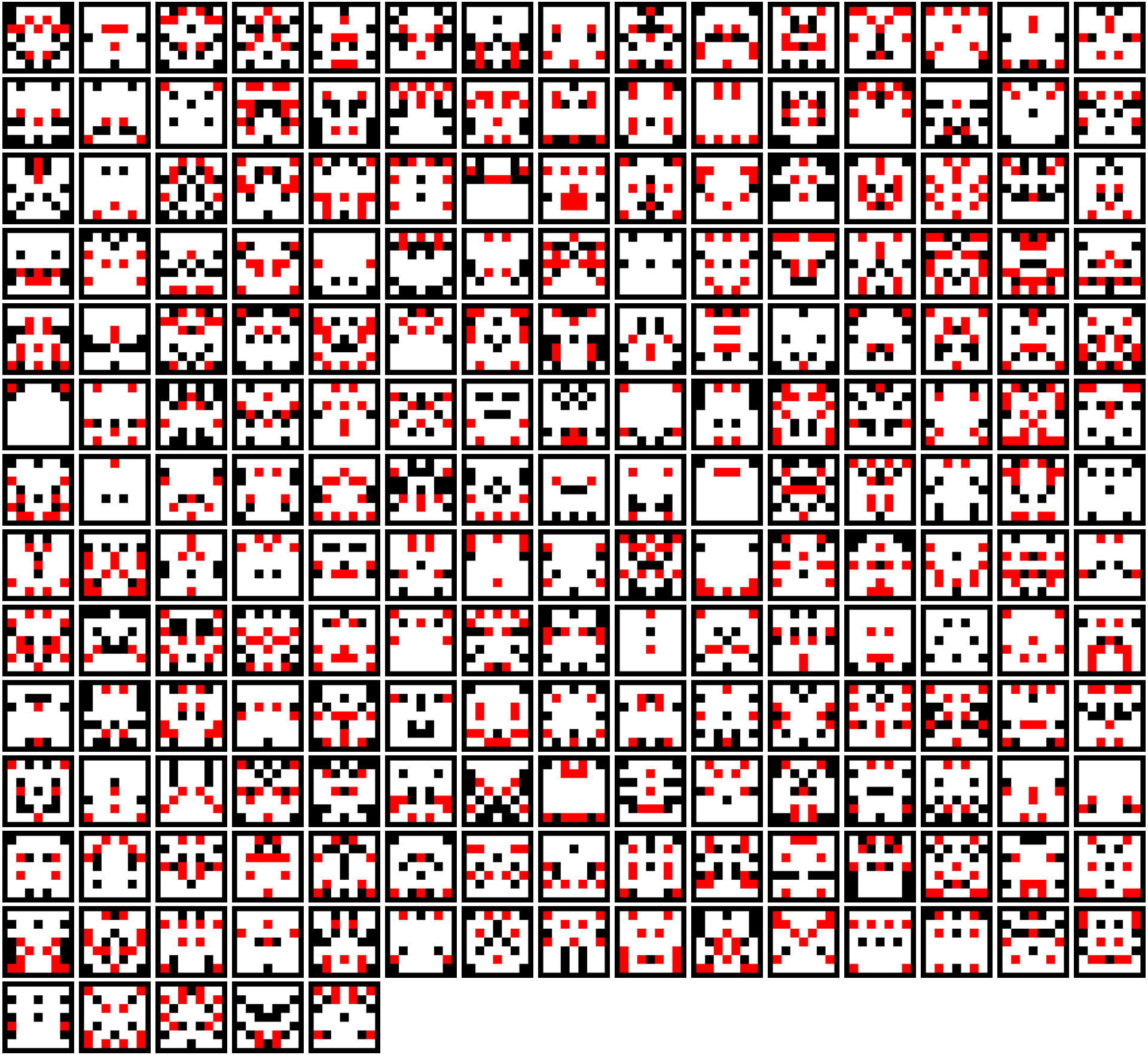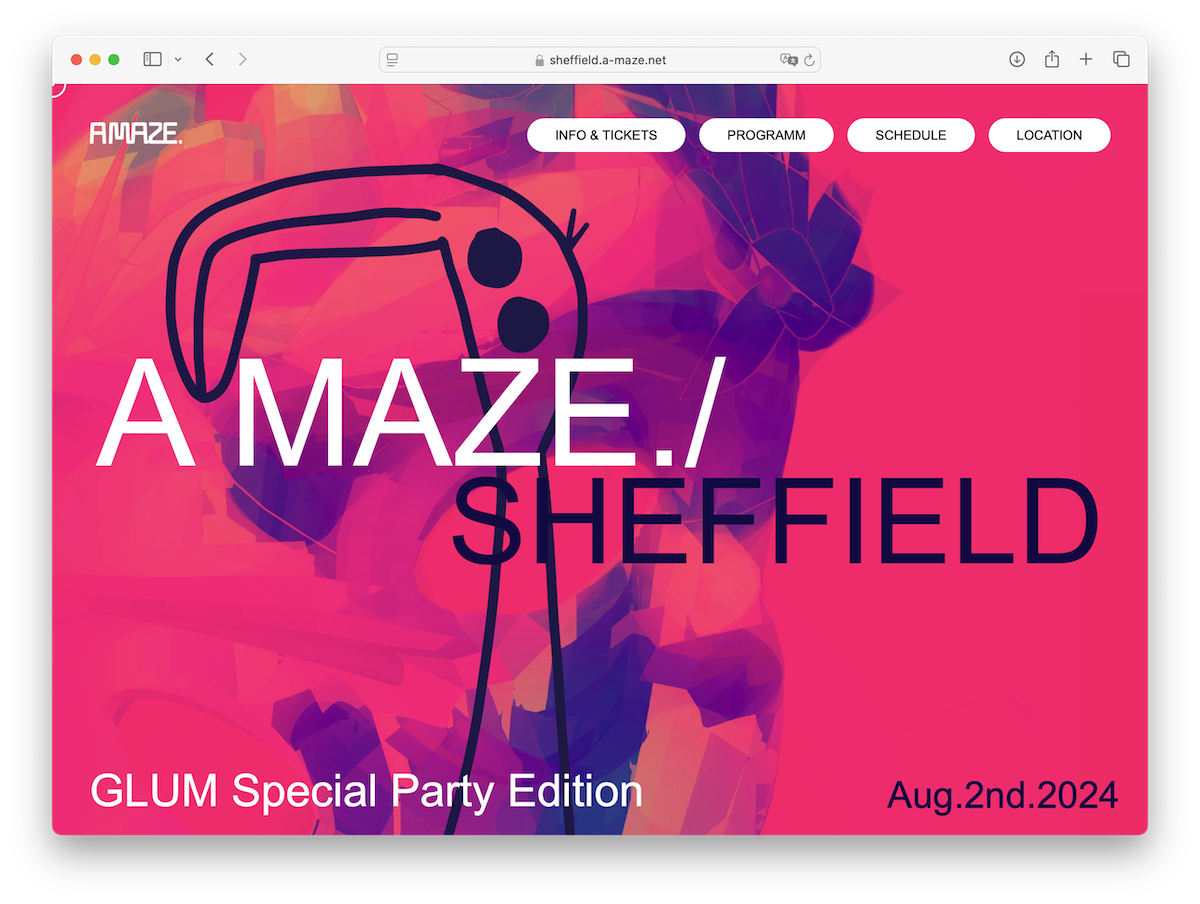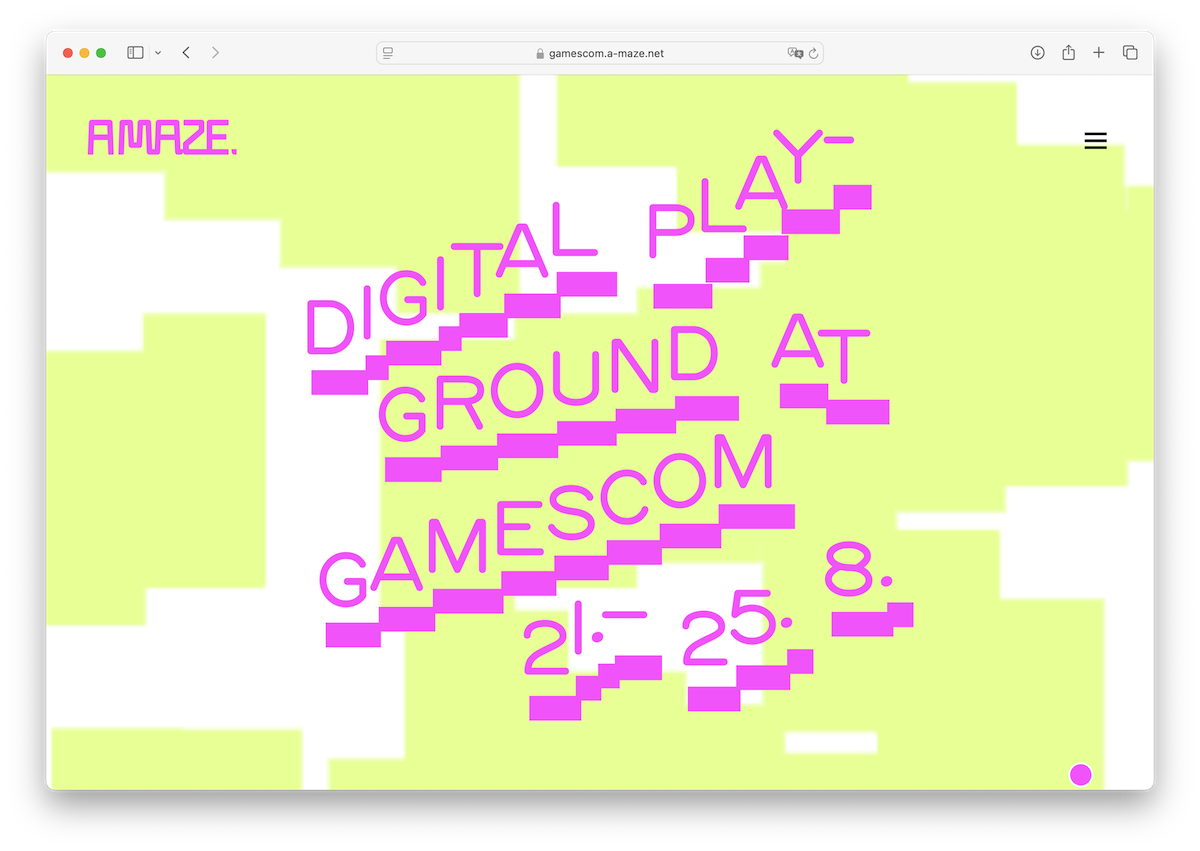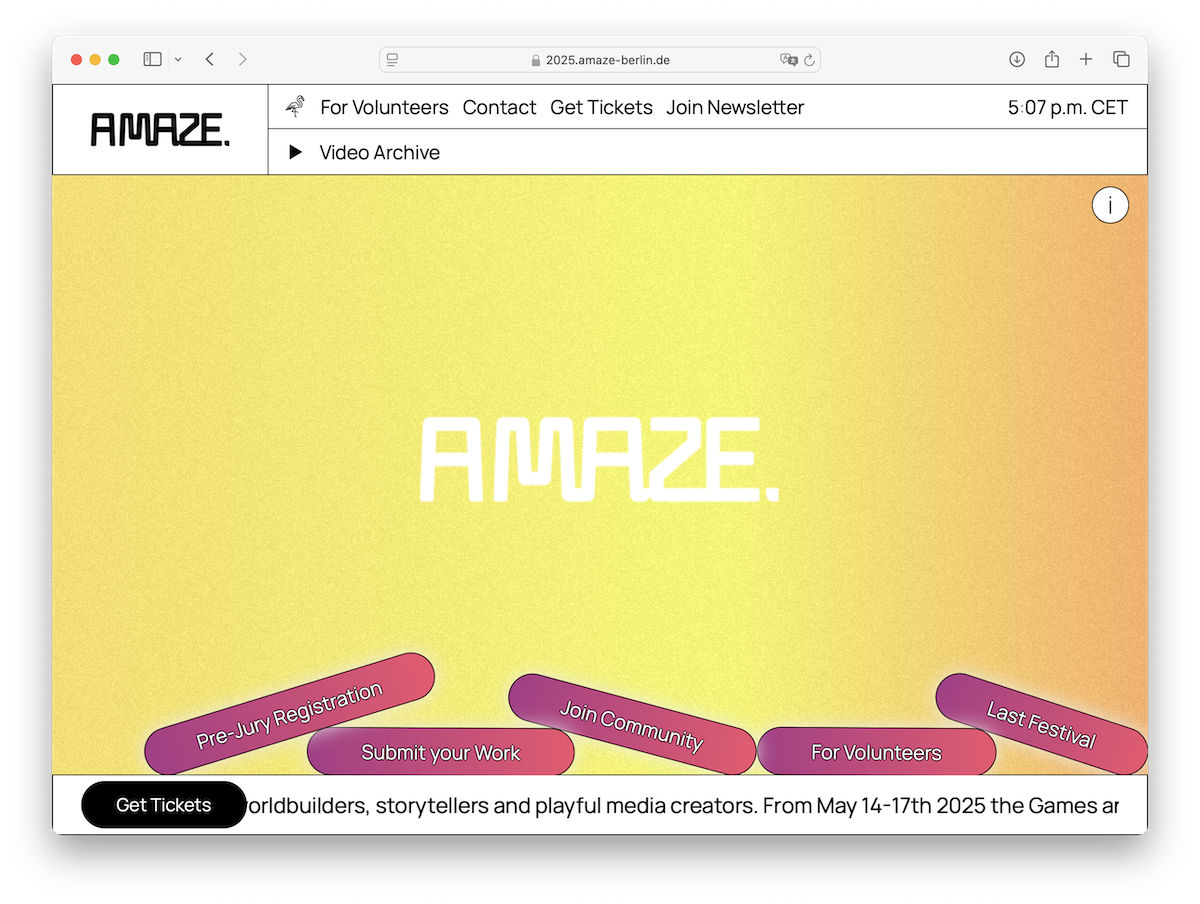Autopixels
What we did
Generative art refers to art that has been created with the use of algorithms or other computational methods. In this case, I used Python, a high-level programming language, to generate the art. The process involves creating a set of rules or instructions that the computer can follow to create a unique piece of art each time, and then you just tweak the algorithm to achieve the desired effect.
After a while of brainstorming different possibilities, I chose a 7x7 pixel tile as the canvas for this project. I then assigned three ink choices to each pixel, which resulted in a total of a mind-boggling 1,853,020,188,851,841 possible combinations, according to the combinatorics formula. (I think I got it right.)
$$\varLambda{1 \atop k}(n)=n^k$$
And we have 28 pixels with 3 ink choices we get 3^28 = 1,853,020,188,851,841 combinations
$$\varLambda{1 \atop 28}(3)=3^28$$
The sheer number of possible combinations makes it highly unlikely that any two generated tiles would be exactly the same.
To generate the art, I wrote a Python script that randomly selected an ink color for each pixel on the tile. The resulting tiles were then analyzed for their aesthetic qualities. I found that while some of the tiles were visually chaotic and lacked any discernible order, others had a surprising amount of beauty and order despite being generated randomly. Some tiles even had symbolic meanings, such as a tile with a heart shape in the center, which could be interpreted as representing love or affection.
I find generative art is an interesting exploration of the intersection between art and technology. By using Python to generate art, I was able to create a vast number of unique pieces, each with its own aesthetic qualities. While not every generated tile was visually pleasing, some were surprisingly beautiful and meaningful despite being created randomly. This project serves as a reminder that beauty and order can arise even from chaos, and that technology can be used to create art that is just as meaningful and impactful as traditional forms of art.
The use of symmetry and recognizable shapes in generative art highlights the interplay between the abstract and the concrete, the random and the intentional, and the machine and the human.
On one hand, the use of a limited color palette and symmetry in the algorithm is a deliberate choice to impose some order and structure on the random generation process. By limiting the color choices to black, red, and white, I was able to create a consistent aesthetic across all the generated tiles. Similarly, by always generating a symmetrical tile, I was able to create a sense of balance and harmony in the final product.
On the other hand, the use of random generation highlights the role of chance and unpredictability in the creative process.While I can set certain rules and constraints on the algorithm, the actual generation of the tile is left up to the computer. This allows for a level of spontaneity and experimentation that would be difficult to achieve through more traditional means.
The use of recognizable shapes in generative art also speaks to the relationship between the abstract and the concrete. While the generated tiles are abstract in nature, the use of recognizable shapes, such as hearts or stars, allows viewers to find meaning and interpretation in the art. This highlights the role of the human viewer in the creative process. By seeing recognizable shapes and interpreting them in their own way, viewers are able to find their own personal meaning in the art.
Overall, in this generative art project I find it raises philosophical questions about the role of intentionality, chance, and human interpretation in the creative process. By using technology to generate art that is both abstract and recognizable, the project invites viewers to reflect on the interplay between the random and the intentional, the machine and the human, and the abstract and the concrete in art.
Images from the project




